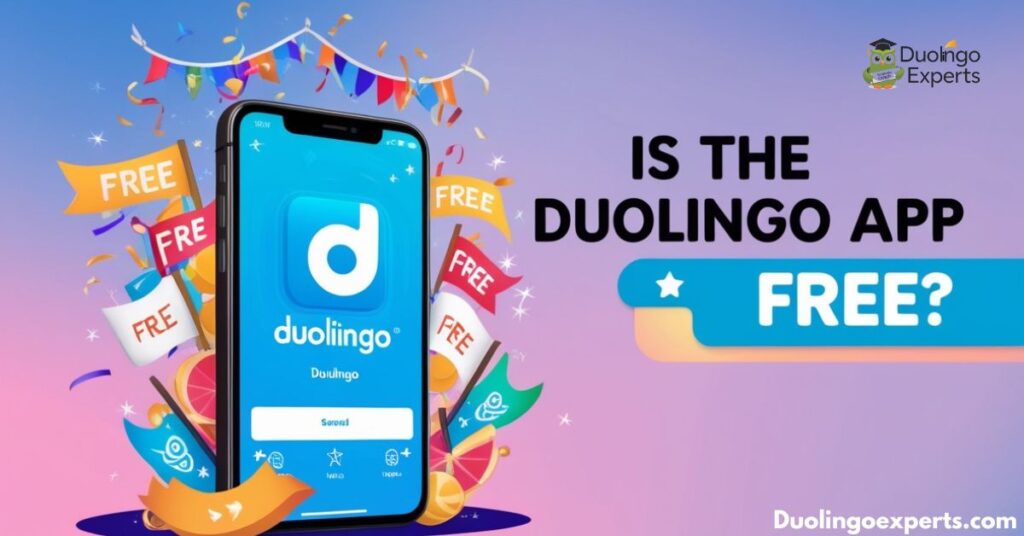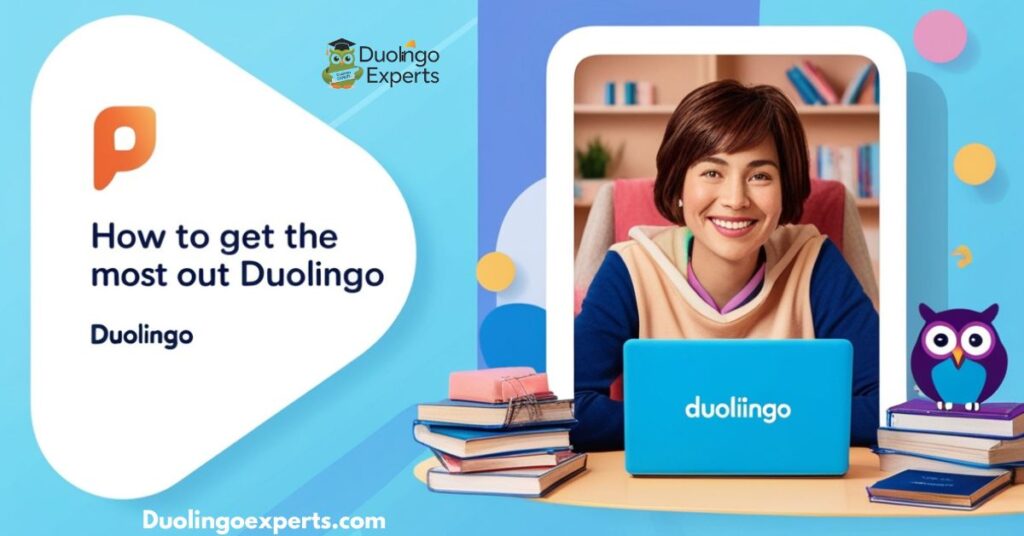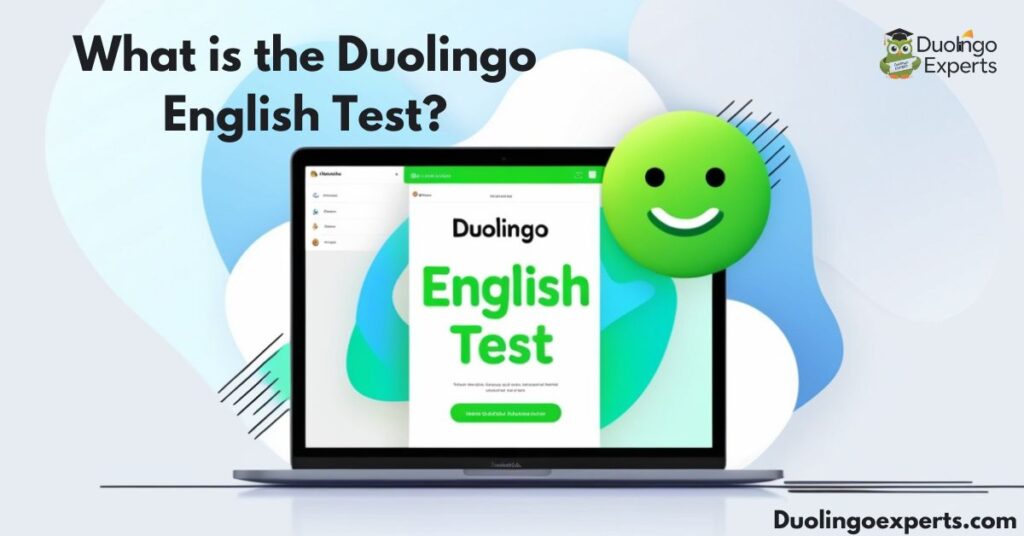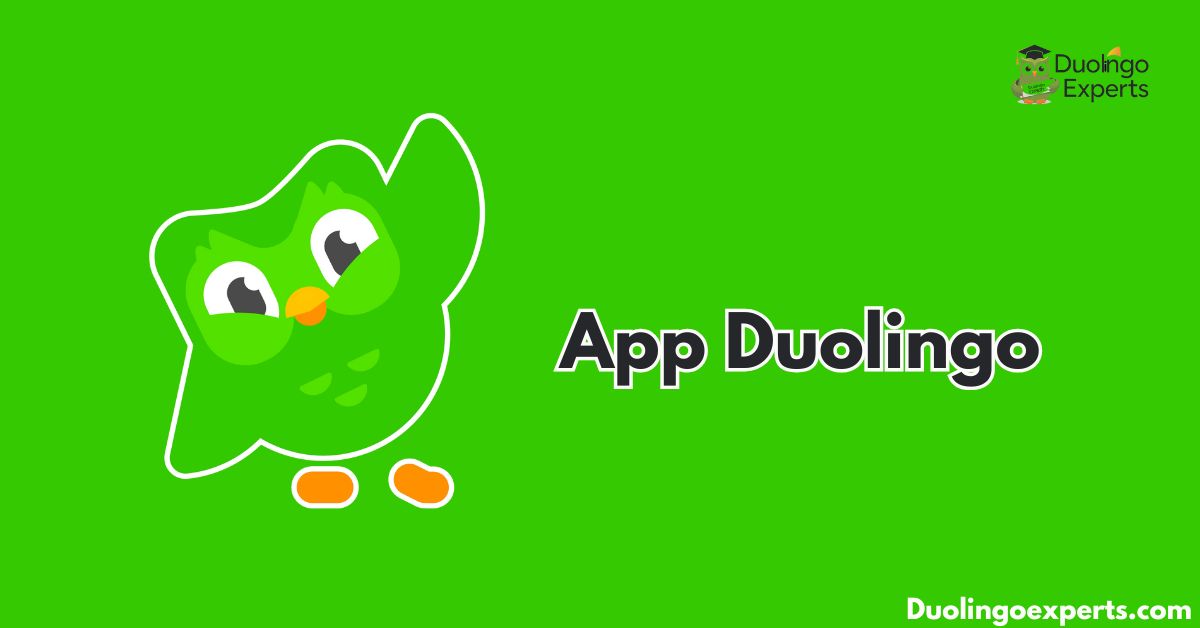App Duolingo has revolutionized the way we approach language learning. The app has transformed what was once a tedious task into a fun, engaging, and gamified learning experience. With millions of active users across the globe, Duolingo continues to grow in popularity thanks to its bite-sized lessons, interactive features, and personalized curriculum. Whether you’re a beginner looking to learn your first language or an advanced learner looking to maintain your skills, Duolingo offers an innovative approach to mastering new languages.
In this comprehensive guide, we’ll explore everything you need to know about Duolingo: how it works, the languages it offers, its features, and how you can maximize your learning experience. Whether you’re curious about learning new languages, understanding how Duolingo’s learning algorithms work, or figuring out if the Super Duolingo subscription is worth the cost, you’ll find all the information you need here.
What is Duolingo App?
Duolingo is a mobile learning platform designed to make language learning accessible, fun, and effective. Founded in 2011 by Luis von Ahn and Severin Hacker, the app was created with the mission of making foreign language education available to everyone, regardless of their financial situation. It’s free to use, with the option of a premium subscription that removes ads and offers additional features.
The app features a variety of language courses, with interactive exercises that cover speaking, listening, reading, and writing. These exercises are designed to help users learn vocabulary, sentence structure, pronunciation, and more. With over 600 million registered users and 40+ languages available, Duolingo has grown into one of the world’s most popular language learning tools.
Duolingo Core Features:
- Bite-sized lessons: Short, manageable lessons that make learning a language easy to integrate into your daily routine.
- Gamified learning: Earning experience points (XP), completing levels, and unlocking new content keeps learners engaged.
- Personalized curriculum: The app adapts to your progress, focusing more on areas where you need practice.
- Speech recognition: Helps improve pronunciation by providing instant feedback on your speaking.
- Leaderboards and clubs: Gamified features that allow you to compete with friends and fellow learners.
The app’s freemium model offers most features at no cost, with an optional subscription to Duolingo’s Super Duolingo plan providing additional benefits.
How Does the Duolingo App Work?
Duolingo operates based on a personalized curriculum that adapts to your individual progress. It uses advanced learning algorithms to track your success and areas that need improvement, ensuring that each learner’s experience is unique. The app is built to work through spaced repetition, meaning that words and phrases you struggle with will appear more frequently to help reinforce your memory over time.
The Duolingo Experience
- Initial Assessment: When you first sign up, Duolingo will ask you to take a quick placement test to determine your current proficiency level in the language you want to learn. Based on your answers, the app will customize the starting point in your course.
- Lessons & Challenges: Each language course is divided into units or levels, covering different aspects of the language, such as grammar, vocabulary, sentence structure, and pronunciation. Within each unit, you’ll encounter various interactive exercises, including:
- Translation challenges: These exercises test your ability to translate sentences between your native and target languages.
- Multiple choice questions: These tests your vocabulary and grammar knowledge.
- Listening comprehension: You’ll hear sentences in the target language and answer questions based on what you’ve heard.
- Speaking practice: Using speech recognition, the app evaluates your pronunciation and fluency.
- Feedback & Progress: After completing each lesson or challenge, Duolingo provides real-time feedback, pointing out your mistakes and offering explanations where needed. The app also tracks your progress and gives you experience points (XP) for completing tasks. You can monitor your progress through a personalized dashboard, which shows you how far you’ve come and what skills need more practice.
- Daily Practice & Streaks: Duolingo encourages daily practice with streaks, rewarding learners for consistent use. Your streak reflects how many days in a row you’ve practiced, and the longer your streak, the more motivated you’ll be to keep learning.
What Languages Can You Learn on Duolingo?

Duolingo offers a wide variety of language courses, catering to both popular and lesser-known languages. The platform provides learners with over 40 languages to choose from, making it one of the most comprehensive free resources for language learning.
Major Languages Offered:
- Spanish (one of the most popular courses)
- French
- German
- Italian
- Mandarin Chinese
- Portuguese
- Arabic
- Japanese
- Russian
- Korean
Duolingo also offers courses for English speakers who want to learn languages such as Dutch, Norwegian, Swedish, Polish, Turkish, and Hindi.
Lesser-Known Languages:
One of Duolingo’s standout features is its commitment to offering courses in less common languages, some of which are not widely taught elsewhere. These include:
- Irish
- Hawaiian
- Navajo
- Welsh
- Scottish Gaelic
- Klingon (from Star Trek)
- High Valyrian (from Game of Thrones)
- Esperanto
While these courses might not offer the same level of in-depth instruction as widely spoken languages, Duolingo provides an accessible and fun introduction to these unique languages. These courses also cater to learners who want to explore cultural and linguistic heritage.
Is Duolingo Good for Learning Less Common Languages?
Duolingo excels in providing access to niche languages that are hard to find in traditional language schools or other language-learning apps. However, for less common languages, the depth of learning can be variable. For instance, while Duolingo offers a decent starting point for languages like Klingon or High Valyrian, the complexity and volume of learning resources for these languages are not as extensive as they would be for Spanish or Mandarin Chinese.
That being said, Duolingo’s adaptive technology ensures that you’re still practicing core skills like vocabulary acquisition, listening comprehension, and basic grammar. For most learners, Duolingo’s approach will provide a fun and educational introduction to a language, even if you want to learn something less mainstream.
What Are the Key Features of Duolingo?
Duolingo’s success lies in its unique features that make learning both effective and enjoyable. Here’s a rundown of some of the app’s key features:
- Spaced Repetition System (SRS): This scientifically proven method helps you remember words and concepts over time by gradually increasing the intervals between when you review them.
- Speech Recognition: Duolingo’s speech recognition technology helps learners improve their speaking ability by offering feedback on their pronunciation. This feature is vital for learners looking to achieve proper pronunciation in a new language.
- Leaderboards and Clubs: The leaderboard system tracks your progress relative to others, making learning feel like a game. You can join clubs where you compete with others, creating a sense of community and motivation.
- Daily Streaks: Duolingo encourages daily practice by tracking your learning streaks. The longer your streak, the more XP you earn, motivating you to keep going.
- Gamification: The use of experience points (XP), lingots, and levels makes Duolingo feel like a game. You can “spend” lingots on fun features, like purchasing a “double XP” booster, keeping the learning process light-hearted.
- Personalized Curriculum: Thanks to adaptive technology, Duolingo personalizes each learner’s experience. The app adjusts to your pace and provides additional practice on topics where you struggle.
- Grammar Instruction: Duolingo includes key grammar instruction in its courses, but without overwhelming learners. Instead of a dry, theoretical approach, grammar is woven into the context of the lessons, making it easier to understand.
- Interactive Exercises: Duolingo’s interactive exercises include listening comprehension, speaking practice, and translation challenges, providing a well-rounded language-learning experience.
Additional Features:
- Offline Course Access (with a premium subscription)
- Podcasts and Stories (available for some languages)
- Placement Tests to assess language proficiency
- Progress Tracking with detailed statistics
How Do Duolingo Leaderboards and Social Features Work?
The leaderboard and club features are designed to increase user engagement and make learning more competitive and social. Here’s how they work:
- Leaderboards: Duolingo’s leaderboards show you how you stack up against other learners based on the number of XP points you’ve earned. The app updates leaderboards weekly, so you can see your progress compared to others.
- Clubs: You can create or join a language learning community (a club) where you can interact with other learners, ask questions, and share tips. Clubs offer a sense of camaraderie, and you can track your progress as a group.
These social features make Duolingo a community-driven platform, encouraging users to stay consistent with their learning and connect with others who share their goals.
Certainly! Here is the continuation of the detailed guide to Duolingo, covering the remaining sections.
Is the Duolingo App Free?
One of the most appealing aspects of Duolingo is that it offers a completely free language learning experience. Users can access most of the app’s core features without spending a single dime.

This includes the bite-sized lessons, gamified learning experience, spaced repetition system, and more. For learners looking to start a new language, the free version of Duolingo is more than enough to get started.
However, there are a few limitations with the free version. These include:
- Ads: Free users will encounter ads between lessons.
- Limited features: Some premium features, such as offline access, progress tracking, and real-time feedback on mistakes, are locked behind the Super Duolingo subscription.
Despite these limitations, the free version of Duolingo remains one of the most accessible language learning apps on the market, offering immense value at no cost.
How Much Does the Super Duolingo Subscription Cost?
Duolingo offers a paid subscription option called Super Duolingo, which unlocks additional features to enhance the learning experience. The subscription offers a more immersive, ad-free experience with access to a range of benefits.
Super Duolingo Features:
- No Ads: Enjoy an uninterrupted learning experience without annoying advertisements.
- Offline Mode: Download lessons to study without an internet connection, making it perfect for traveling or learning on the go.
- Progress Tracking: Access more detailed analytics and tracking to monitor your learning journey.
- Streak Repair: If you miss a day of practice, you can use your Super Duolingo subscription to “repair” your streak.
- Unlimited Hearts: The app uses a heart system, and if you run out of hearts, you must wait to continue or practice harder lessons. Super Duolingo users get unlimited hearts.
Pricing:
- $12.99 per month for the subscription.
- $6.99 per month when billed annually.
Given the features it unlocks, many dedicated learners find that the subscription is well worth the price, especially those who want to track their progress more closely or need access to offline lessons.
Is Duolingo Effective for Learning Languages?
Duolingo has earned a reputation as one of the most effective language learning apps, but it’s important to understand its strengths and limitations. Here’s a breakdown of how Duolingo’s effectiveness compares to other language learning methods.
Strengths of Duolingo:
- Engagement: Duolingo uses gamification systems that encourage you to keep coming back for daily practice. The daily streaks, leaderboards, and XP points all contribute to user engagement, making learning feel like a game.
- Short Lessons: The app’s bite-sized lessons allow for quick practice, which is ideal for busy learners who may not have the time for long study sessions.
- Spaced Repetition: Duolingo’s use of spaced repetition helps improve language retention by presenting words and phrases at increasing intervals, which reinforces memory.
- Feedback and Adaptation: The app provides real-time feedback on pronunciation, grammar, and sentence construction, helping you correct mistakes quickly.
- Vocabulary Building: The app covers a wide range of vocabulary, which is essential for building a solid language foundation. Users often report that their vocabulary improves dramatically after regular practice.
Limitations:
- Grammar Depth: While Duolingo introduces you to grammar, it doesn’t always go into deep explanations. If you’re looking for an app that focuses heavily on grammar instruction, Duolingo may not be sufficient on its own.
- Speaking Practice: Duolingo’s speech recognition feature is helpful, but it’s not perfect. It might struggle to assess pronunciation in certain accents or dialects, and its feedback can sometimes be overly strict.
- Limited Conversational Practice: Duolingo doesn’t provide opportunities for real-life language immersion or conversation practice with native speakers. For fluency building, supplementary resources (like language exchanges or real-world practice) are still necessary.
Overall, Duolingo is highly effective for beginners or those who want to practice consistently in a fun and engaging way. However, advanced learners may need to combine Duolingo with other resources to deepen their language skills.
What Are the Pros and Cons of Using Duolingo?
As with any tool, Duolingo has its advantages and drawbacks. Let’s dive into both sides to give you a complete picture.
Pros:
- Accessible and Free: Duolingo offers a great free version, making it easy for anyone to start learning a new language.
- Engaging: Its gamified structure makes learning addictive and fun, motivating you to keep practicing every day.
- Wide Language Selection: Duolingo offers a broad range of languages, including both popular and less common languages.
- Flexible Learning: With its mobile app and online platform, Duolingo allows for cross-platform learning and on-the-go study.
- Progress Tracking: You can monitor your language proficiency, earning XP for completing lessons and tracking your improvements over time.
Cons:
- Lack of Conversational Practice: While Duolingo offers useful exercises, it lacks opportunities for real-world conversations with native speakers.
- Grammar Explanations: The app’s grammar lessons can sometimes feel basic and might not be sufficient for users looking for in-depth explanations.
- Speech Recognition Issues: The app’s speech recognition system is not always accurate, especially with certain accents or in noisy environments.
- Repetitiveness: Some users find that Duolingo’s lessons can become repetitive, particularly after reaching higher levels of proficiency.
How to Get the Most Out of Duolingo

To make the most of your Duolingo experience, consider these tips:
- Set a Daily Goal: Duolingo encourages daily practice with streaks. Set a realistic goal to maintain consistency and ensure continuous progress.
- Practice Speaking Aloud: Use the speech recognition feature as much as possible. It will help you improve your pronunciation and speaking skills.
- Use Duolingo in Context: While Duolingo provides great grammar instruction and vocabulary building, try to immerse yourself in real-life contexts (e.g., watching TV shows or reading books in your target language).
- Leverage the Leaderboards: Duolingo’s leaderboard system can be a great motivator. Competing with friends or other learners will encourage you to practice more regularly.
- Supplement with Other Resources: Duolingo is great for building vocabulary and basic skills, but it should be complemented with other learning resources such as language exchange apps, grammar books, or real conversations with native speakers.
Should You Only Use Duolingo or Combine It with Other Resources?
While Duolingo is an excellent starting point and a fun way to build foundational skills, language immersion and real-life practice are essential for achieving fluency. Here’s why it’s a good idea to combine Duolingo with other resources:
- Duolingo is excellent for vocabulary building and basic grammar, but to become proficient, you need more in-depth grammar lessons, and conversation practice with native speakers.
- Use Duolingo in tandem with language exchange platforms like Tandem or HelloTalk to practice speaking and improve conversational fluency.
- Incorporate cultural immersion through watching movies, reading books, or listening to music in your target language to enhance language acquisition.
Combining Duolingo with other language learning apps, tutors, and native speakers will ensure a more holistic learning experience.
Duolingo for Schools and Classrooms
Duolingo isn’t just for individuals. It’s also making waves in education with its Duolingo for Schools program. This free service allows educators to monitor and guide their students’ progress as they learn a new language.
Key Features of Duolingo for Schools:
- Classroom Integration: Teachers can create classrooms, assign lessons, and track individual student progress.
- Customizable Learning Paths: Teachers can tailor the curriculum to suit the needs and proficiency levels of their students.
- Real-Time Analytics: Educators can access detailed learning analytics to assess how well students are mastering the language.
- Group Learning: Students can interact and collaborate through clubs and leaderboards, making learning more social.
Duolingo for Schools brings the power of Duolingo’s interactive exercises into the classroom, offering a fun and effective way for students to learn a new language.
Duolingo Other Language Learning Tools
In addition to the core language learning app, Duolingo has expanded into several other language-related areas:
- Duolingo ABC: Aimed at younger learners, this tool helps kids get started with reading and writing in a new language.
- Duolingo Math: While primarily a language learning app, Duolingo has ventured into teaching math through a similar gamified experience.
- Duolingo Music: A fun and engaging way for music lovers to explore languages through the universal medium of music.
These tools further establish Duolingo as a leading educational technology platform catering to different learning needs.
What is the Duolingo English Test?

The Duolingo English Test (DET) is an online English language proficiency test used by many educational institutions as an alternative to traditional exams like TOEFL or IELTS. The test is adaptive, meaning the difficulty of the questions changes based on your performance, ensuring that it accurately assesses your level of English proficiency.
Key Features of the Duolingo English Test:
- Affordable: The test costs around $49, making it a budget-friendly alternative to other English proficiency tests.
- Quick Results: Results are available within 48 hours, much faster than other language exams.
- Widely Accepted: Many universities, including those in the US, UK, and Canada, accept the Duolingo English Test for admissions.
Duolingo’s English Test has gained credibility for its ease of use, affordability, and quick turnaround time, making it an attractive option for international students.
Frequently Asked Questions About App Duolingo
Is the Duolingo app really free?
Yes, the Duolingo app is free to use and offers most of its core features without any cost. However, a paid Super Duolingo subscription is available for extra benefits like an ad-free experience and offline access.
How much does Duolingo cost per month?
Duolingo’s Super Duolingo subscription costs $12.99 per month. Alternatively, you can pay $6.99 per month when billed annually.
What is the disadvantage of Duolingo?
One disadvantage of Duolingo is its limited focus on grammar explanations, which may not be sufficient for advanced learners. Additionally, it lacks real-life conversation practice with native speakers.
Can you become fluent with Duolingo?
While Duolingo is excellent for building vocabulary and basic skills, it may not be enough on its own to achieve full fluency. To become fluent, you’ll need additional practice with native speakers and immersion in real-world conversations.
Can I use Duolingo without paying?
Yes, you can use Duolingo for free, accessing most of its core features, including lessons and exercises. However, the free version includes ads and lacks some premium features like offline access and progress tracking.
What is the hardest language to learn?
The hardest languages to learn for English speakers are often considered to be Mandarin Chinese, due to its complex writing system and tones, and Arabic, due to its script and grammar. Both require significant dedication and practice to master.
Is Rosetta Stone better than Duolingo?
Rosetta Stone offers a more immersive, grammar-focused approach, which may be better for deeper language comprehension. However, Duolingo is more gamified, engaging, and accessible, making it ideal for casual learners and daily practice.
What is the easiest language to learn?
The easiest language to learn for English speakers is often considered to be Spanish, due to its straightforward grammar and pronunciation. Other easy languages include French and Italian, which share similarities with English vocabulary.
Can I trust Duolingo?
Yes, Duolingo is a trusted and widely used language learning platform with over 600 million users. It uses scientifically-backed methods like spaced repetition and gamification to help users learn effectively.
Can you use Duolingo without an account?
You can use Duolingo without an account for limited practice, but creating an account allows you to track progress, earn rewards, and maintain your daily streaks. An account also unlocks personalized learning features.
Conclusion
Duolingo offers an accessible, enjoyable, and effective way to learn a new language. Whether you’re starting from scratch or brushing up on your skills, Duolingo’s adaptive technology, interactive exercises, and gamified learning experience provide an excellent foundation for language acquisition. By combining Duolingo with other language resources, you can take your language learning to the next level and start engaging with native speakers in no time.
So, what are you waiting for? Download Duolingo today and start your journey to fluency!
>>>Read Also: Duolingo Math Android Release: Latest Updates and Availability Details

DuolingoExperts, managed by MarkJohan, offers expert insights and tips for mastering languages. A tech-driven platform to enhance your learning experience.

